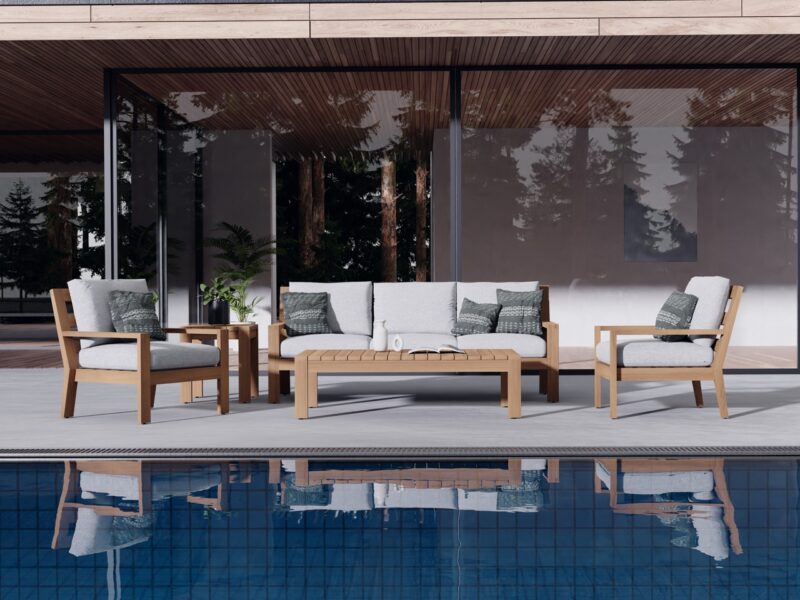Speaking of the best oils for wood furniture, there are two different types: for finishing the wood and for treatment. Woodworking and furniture industries offer numerous types of oil for these purposes, but your options depend on things like availability, costs, and how the oils react to specific wood.
Oils have important functions in woodworking and wood furniture maintenance. Make sure you understand their differences and choose the best oils for specific purposes.
Table of Contents
5 Best Oils for Wood Furniture Finishing Coat
This part is for woodworkers and furniture makers. Everyone knows that you need to protect the table surface before someone can use it, which includes applying a finishing coat to the surface. Oil is regarded as a nontoxic, environmentally-friendly option compared to varnish and lacquer.
There are five popular types of oil used as finishing coats in the woodworking industry. They are:
A. Tung Oil
Extracted from the tung tree seeds, tung oil has become a finishing coat in woodworking for thousands of years, beginning in Eastern Asia. Most table makers use polymerized or boiled tung oil because it is easy to find, but high-quality products often use pure tung oil.
Tung oil is a great option for a nontoxic and food-safe coat. It also maintains the color of the wood and does not yellow as easily as other oil-based coats.
B. Flaxseed Oil
Flaxseed or linseed oil is another common option for finishing coats. Once applied, the wood will absorb flaxseed oil more easily. It results in much better protective quality compared to other oils. Flaxseed oil also maintains and even brings out the true color of the wood, making it one of the best oils for wood tables.
Many woodworkers use polymerized flaxseed oil for quicker drying time. Pure flaxseed oil is harder to dry, and the coating process can take weeks to finish. However, pure oil gives better protection quality for wood furniture.
C. Walnut Oil
Walnut oil is a popular option for dining tables, cutting boards, food bowls, and other wood products for serving or preparing food. Just like linseed oil, walnut oil is commonly available in a polymerized form for quicker drying speed. The pure one takes weeks to dry, but the result is better in protection and visual quality.
D. Mineral Oil
Mineral oil is derived from petroleum, coming in the form of a clear, odorless, viscous solution. It offers decent protection and is mostly nontoxic. Mineral oil is also a good choice to coat wood products used for food preparation or serving, like bowls, cutting boards, cheese boards, and many more.
Mineral oil is sold under various brands and forms, from pure to polymerized. However, it is not as popular as plant-based oils for finishing coats, simply because linseed or tung oils are more popular as finishing coats.
E. Danish Oil
Despite being a common finishing coat for wood furniture, “Danish oil” is a bit hard to describe. Many Danish oil products are basically the mixture of several common oils, like tung and flaxseed. The name itself came from the rising popularity of imported Scandinavian wooden furniture in the mid-20th Century. Just like the furniture, the oil is claimed to give an elegant, subtle sheen to the wood surface. Danish oil is known for being food-safe and water-resistant.
While an oil-based coat is nontoxic and quite good, it is not as strong as lacquer and varnish. Make sure you use good oils to regularly treat and maintain your wood furniture.
5 Best Oils for Wood Furniture Treatment
Wood furniture needs regular treatment to keep the surface shiny, clean, and free from scratches and stains. Some oil products are great for removing imperfections, bringing back the shine, and protecting the wood from bugs, mold, and mildew.
Here are five of the best oils for wood maintenance you can easily purchase.
1. Tung Oil
Tung oil not only works as a finishing coat but also as a treatment oil. It has a waterproof quality that is good for preventing moisture from seeping into the wood and ruining it. Again, you can always buy the polymerized or boiled version if you want a product that dries more quickly than the pure one.
2. Linseed Oil
Linseed oil is a great product for removing grime and grease without making your wood furniture dull. Polymerized oil is a better choice for quick drying compared to pure one, which can take weeks before drying properly. However, make sure to dilute the oil in water if you use it as a regular cleaning product, or you risk leaving a grease stain.
3. Lemon Oil
Lemon oil is a great cleaning product to repel molds and mildew, especially if your furniture is made of hardwood. You should dilute several drops of this oil in water or mineral spirits to make it work. Lemon oil can also reduce the appearance of bugs.
4. Lavender Oil
Lavender oil is a nice product for light, regular wood furniture cleaning. Mixing several drops of this oil with mineral spirits or water is great for removing dust and dirt particles. The oil also leaves a subtle aroma on the surface, a perfect addition for wood furniture in rooms like the dining room and study or home office.
Lavender oil might not be a common option for wood treatment and maintenance. However, it has qualities for keeping your table clean and smelling good. Plus, it dries relatively fast, unlike the more popular oil, like linseed (the pure one).
5. Mineral Oil
Mineral oil for cleaning purposes is light, odorless, and nonflammable, perfect for maintaining the surface quality of your furniture. You can also use it as protection against mildew and mold. When cleaning a wood item, apply the oil twice as a way to create a stronger protective layer, at least until the next maintenance session.
Using the right oils to coat and treat your wood furniture is important to keep the surface intact. However, make sure you buy a high-quality wood item first from the start. A good table is protected by layers of finishing coat, which make your future maintenance job ideal.
Buy high-quality Indonesian furniture by Posteakfurniture, and use the best oils for wood furniture to keep your new item clean, strong, and shiny for many years to come.
- Quick Facts About the Standard Bench Dimension - October 20, 2022
- It’s Here! The Best Fabric to Use for Outdoor Furniture - October 19, 2022
- Know This! How and Where to Store Patio Cushions - October 18, 2022


